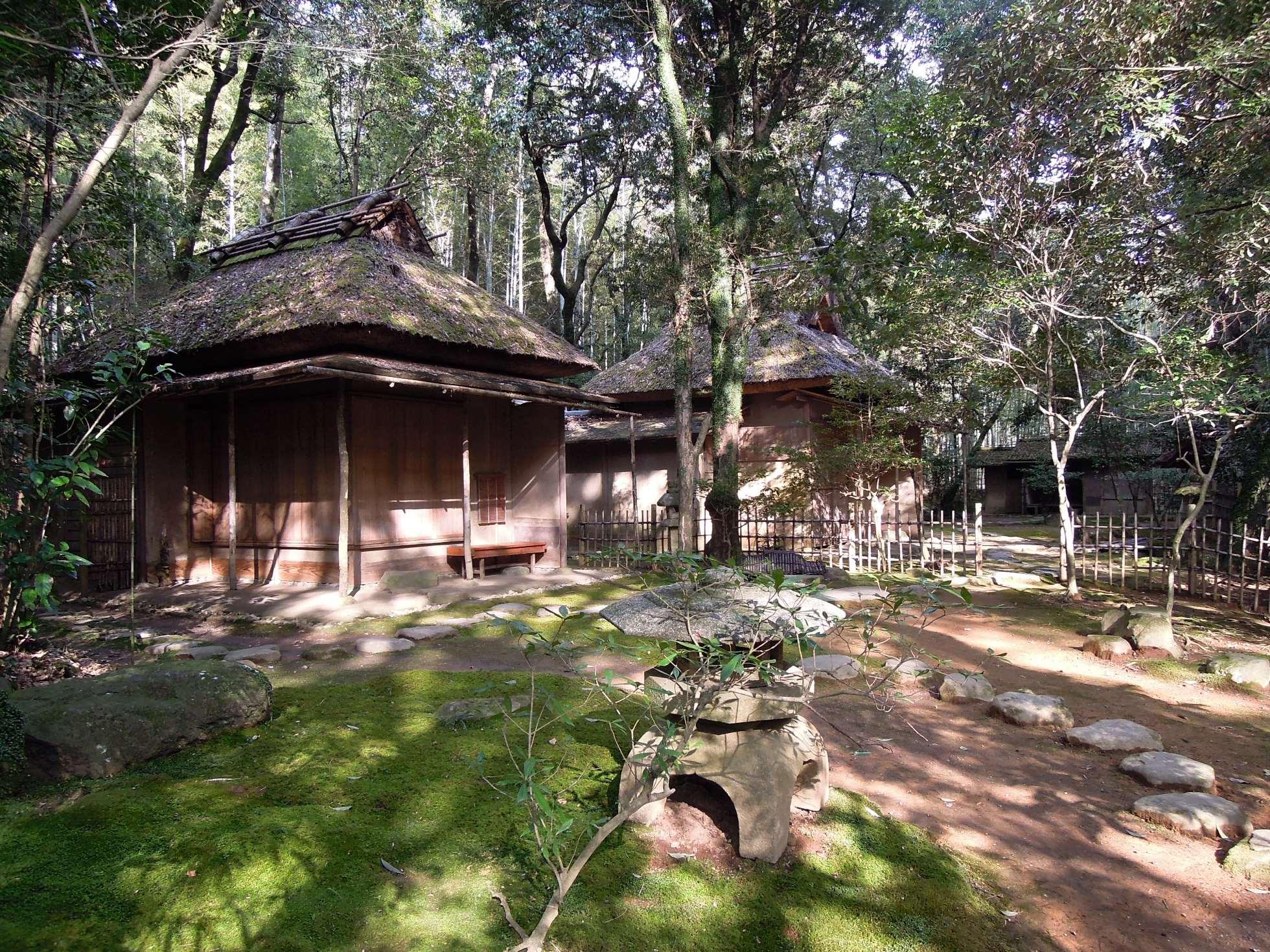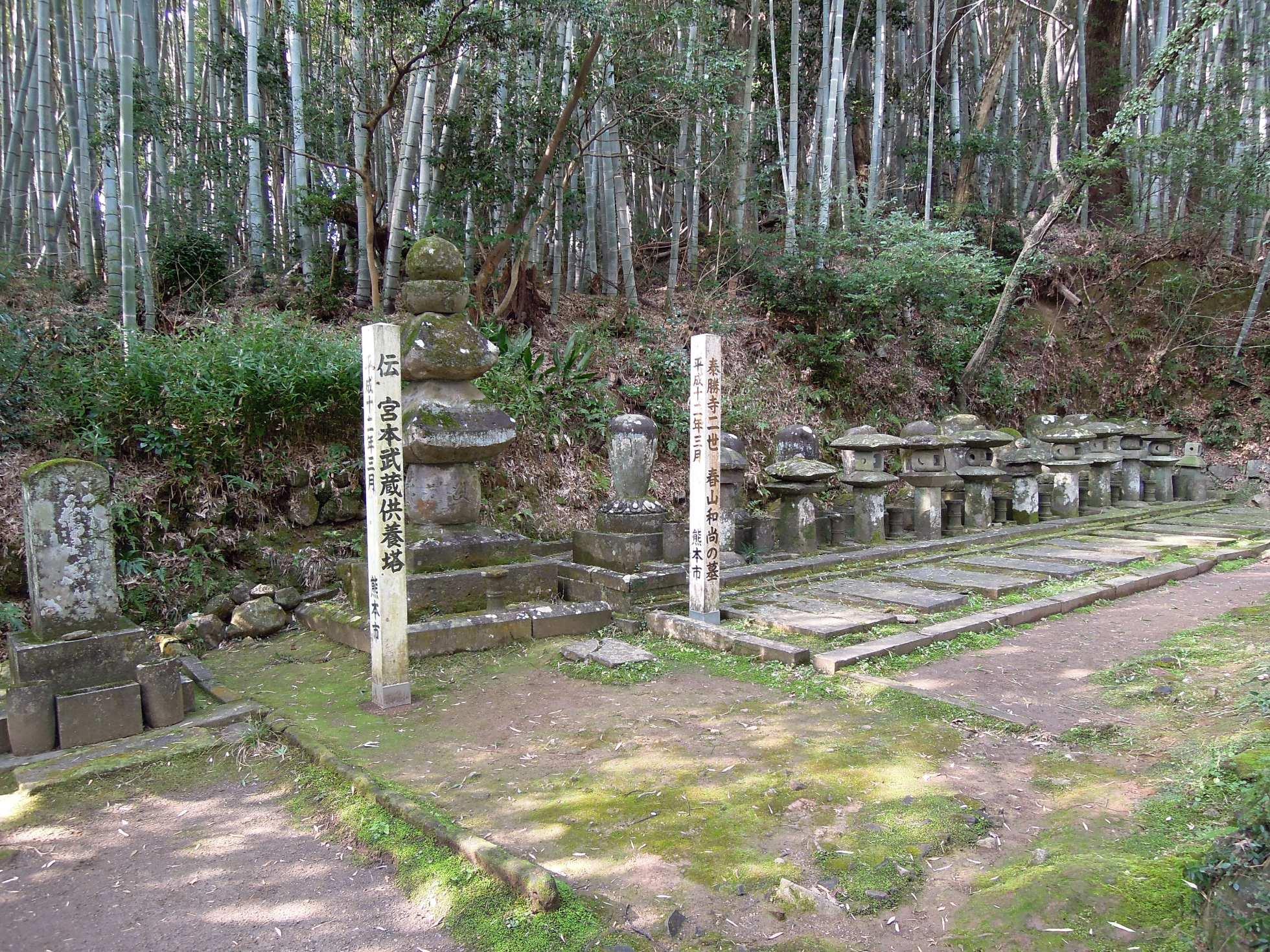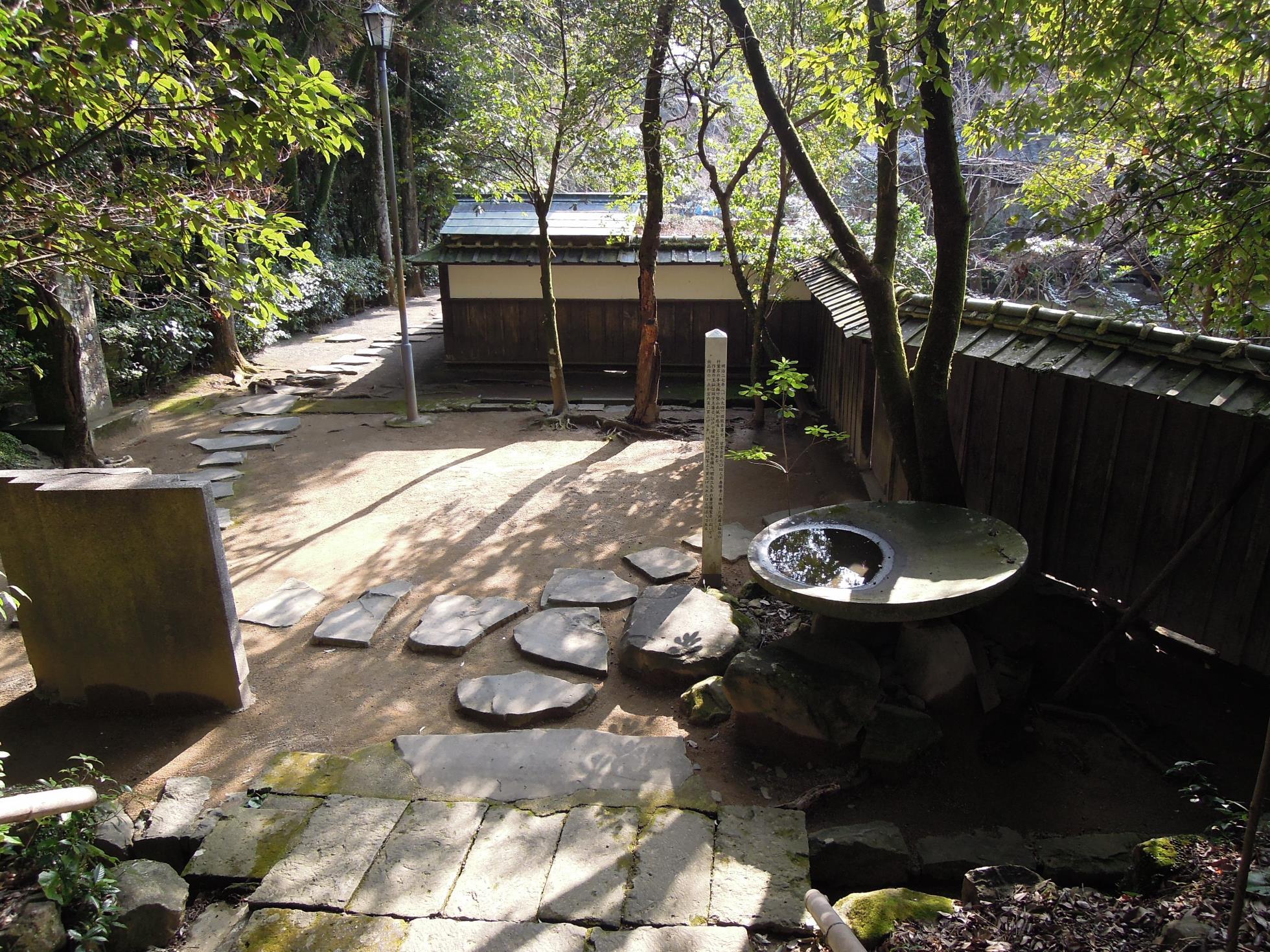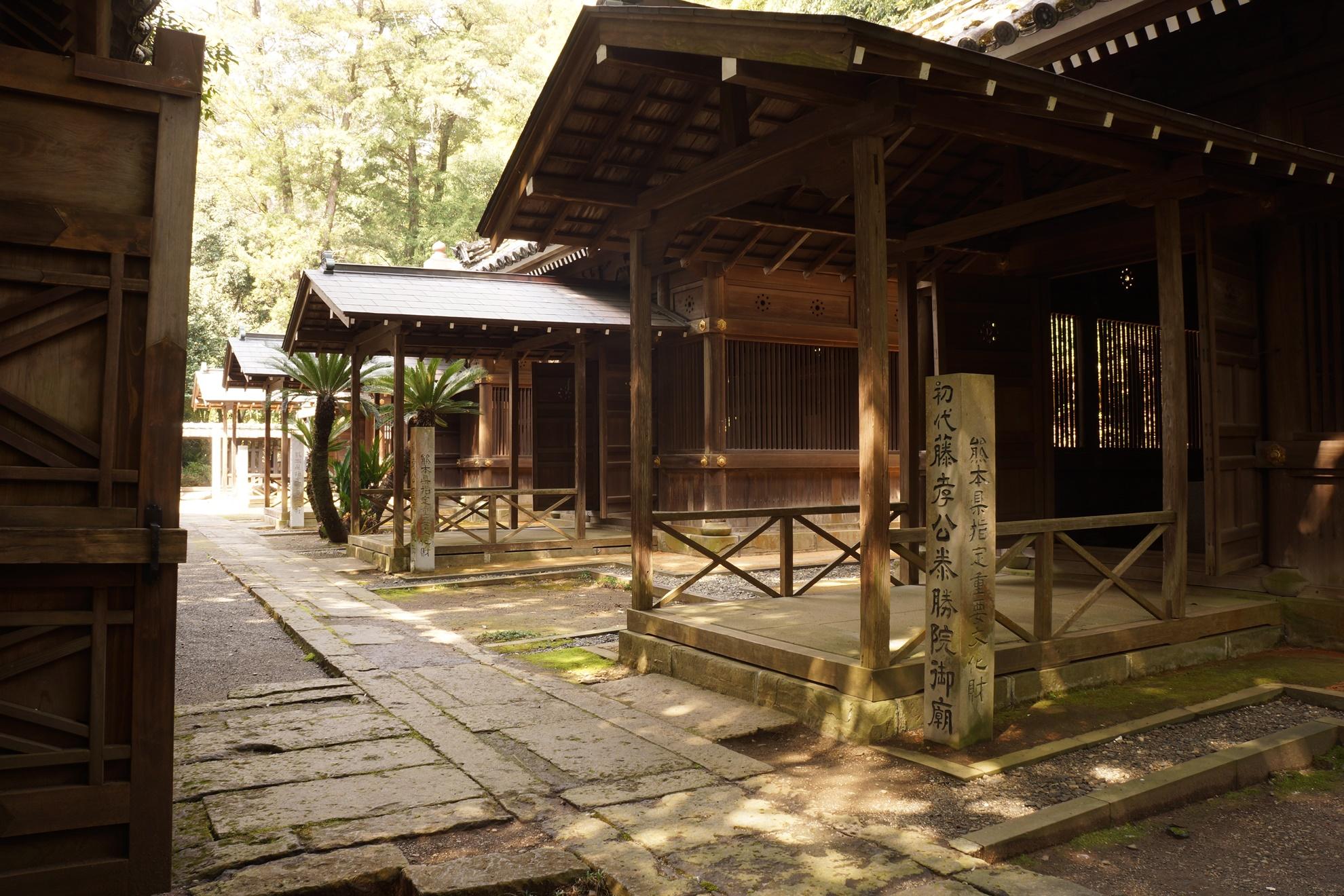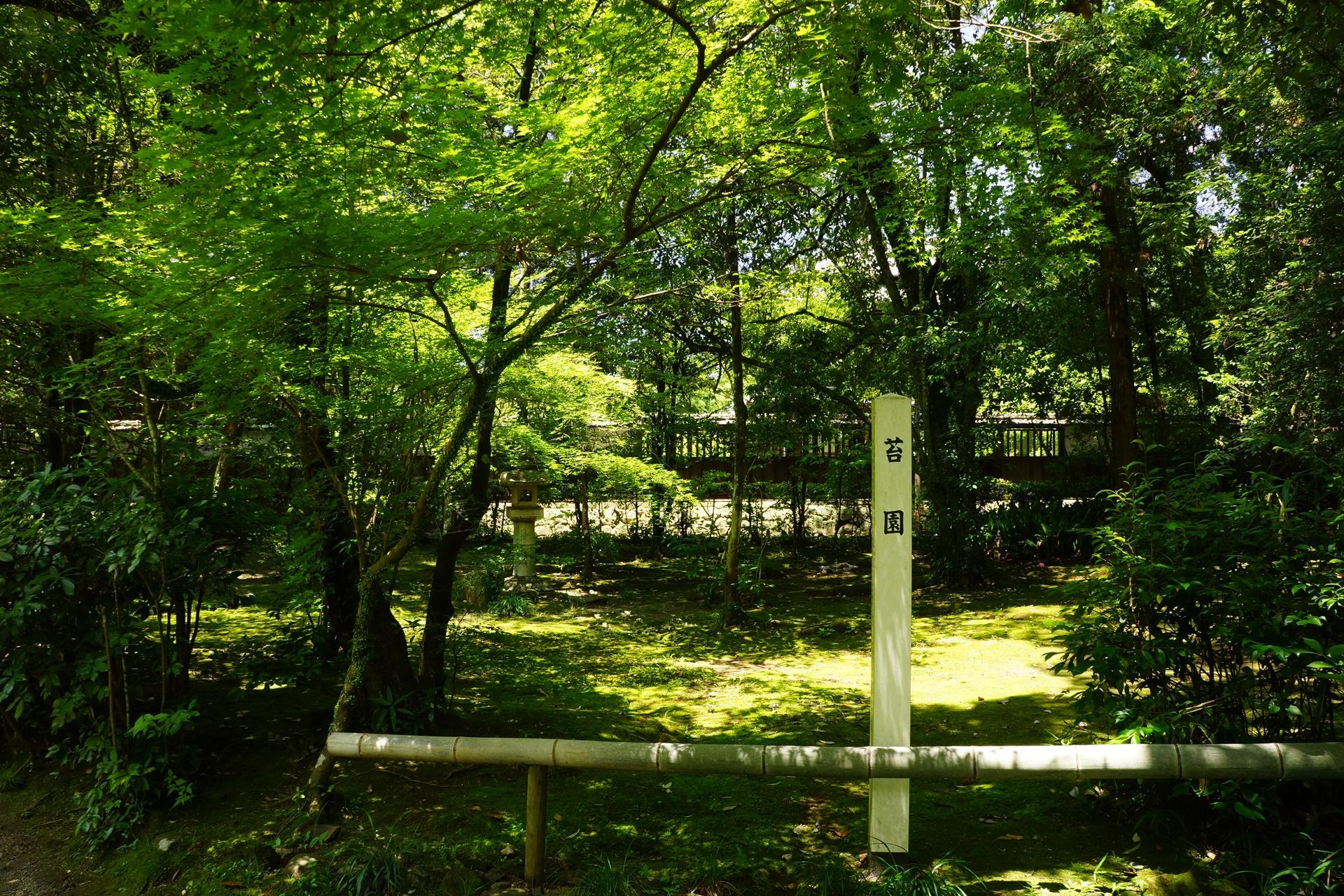The site of Taishoji Temple, which was the family temple of the Hosokawa Clan (the feudal lords of the Kumamoto domain), lies at the foot of Mt. Tatsuda.
Located here are four mausoleums dedicated to Hosokawa Fujitaka (the 1st generation Hosokawa lord of the domain), Fujitaka’s wife, Hosokawa Tadaoki (the 2nd generation Hosokawa lord of the domain), and Hosokawa Gracia (Tadaoki’s wife) as well as the Ko-sho-ken teahouse.
The Ko-sho-ken teahouse was restored based on the original drawings of Hosokawa Tadaoki, who was a warrior said to be the best tea ceremony practitioner in Japan.
Tadaoki cherished the teahouse’s handwashing bowl, and it was also used by both Toyotomi Hideyoshi and tea master Sen no Rikyu while Tadaoki was in Kyoto.
Successive feudal lords brought this handwashing bowl along on their sankin-kotai (a system in which lords spent every other year in Edo, the capital) so they could hold tea ceremonies in every season.
The tomb of Miyamoto Musashi, who was personally invited to Kumamoto by Hosokawa Tadatoshi, is also said to be located here.
There are a total of five tombs in the country that claim to be the grave of Miyamoto Musashi and three of them are in Kumamoto, which is where he spent his later years before his death in 1645.
One of these purported tombs is located here at the site of Taishoji Temple.
Another is in Musashizuka Park on the Ozu Kaido highway (along the former National Route 57), alongside rows of old cedar trees. It is said that Musashi was buried wearing armor and holding a sword in accordance with his last words, “I hope I may watch and protect the Hosokawa clan from behind when they pass through this place.” Inside of Musashizuka Park there is a mossy tombstone that reads, “The stone pagoda of master swordsman Musashi” as well as a bronze statue of Musashi.
The third is Nishi-Musashizuka in Shimasaki-cho, which is in the western part of the city.
Even now, it is unknown which of these is Miyamoto Musashi’s real burial site.
Surrounded by greenery, this park was named Tatsuda Natural Park after it was loaned to Kumamoto City by the Hosokawa family in 1955, and it has since become a popular place for citizens to relax. This park was designated as a National Historic Site, along with the site of Myogeji Temple in Kitaoka Natural Park, as it is a family graveyard of the Hosokawa lords of the Kumamoto domain.

